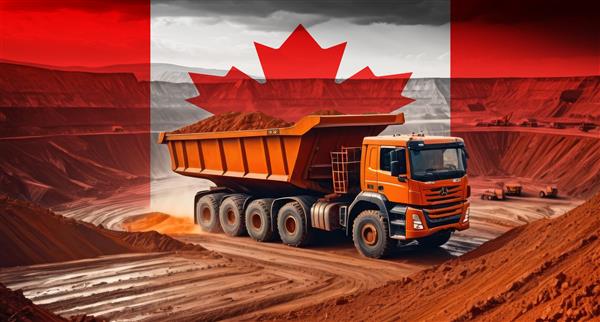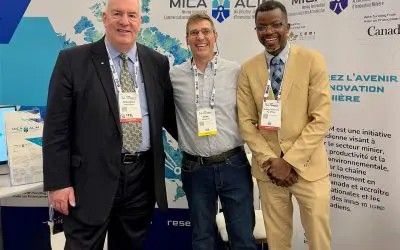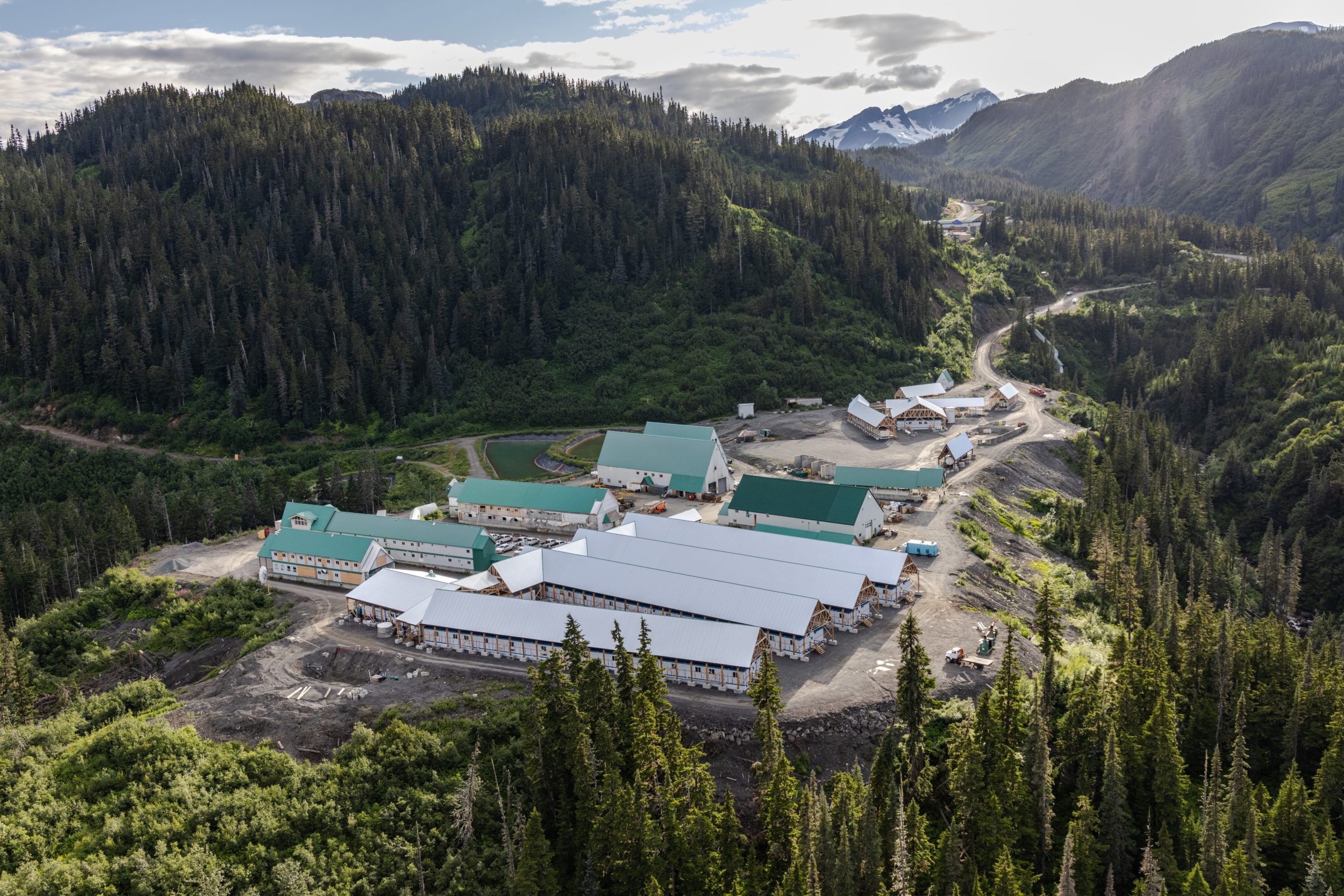Big Money
When planning an expansion at the largest open pit mine in Quebec, thinking big is important. That’s exactly what ArcelorMittal did when it announced a $2.1-billion expansion of the Mont-Wright iron mine and concentrator at Fermont, QC. Plans call for moving twice as much ore and waste next year than last year with the help of 400-tonne haul trucks.
“The Mont-Wright expansion was the first project announced after the Quebec government unveiled its Plan Nord,” said Eric Tetrault, ArcelorMittal’s manager of communications and public affairs. “And it is the largest project currently underway.”
Quebec’s Plan Nord was launched in May 2011. It is intended to encourage resource investment in the province by providing northern infrastructure over the next 25 years.
The existence of Plan Nord did not automatically mean that Mont-Wright would receive a $2.1-billion cash injection. There was competition among various ArcelorMittal iron ore producers to be the site of the planned expansion. The money might have gone to the United States, Mexico, Brazil or any of a number of African and European operations. Instead, it was pledged to the Mont-Wright expansion due in part to the commitment of the Quebec government.
“Plan Nord was one of the factors that led to the selection of Mont-Wright,” said Tetrault. “There also had to be a workforce, current production, existing infrastructure … Having this kind of indirect support [Plan Nord] is crucial.”
The expansion project will create 900 permanent jobs that are to be filled this year, as well as 8,000 construction jobs. Tetrault added that the company has received 16,000 resumes from people looking to fill those positions. About 60% of the Mont-Wright workforce is on a fly-in/fly-out rotation, but that can change.
The Mont-Wright mine is a series of open pits mined with conventional truck-and-shovel technology. The mill at the mine site produces a 29% Fe concentrate that is shipped 420 km by rail to the pelletizing plant at Port Cartier. Finished pellets are shipped to other ArcelorMittal operations (40%), to contract customers (40%) and sold to the spot market (20%).
When the expansion is complete in 2013, the amount of ore and waste to be moved will grow to 150 million t/y, double the current capacity of 75 million t/y. To keep that amount of material moving, ArcelorMittal will operate 13 Cat 797 (400-t) trucks, the largest available. There will also be 15 Cat 783 (240-t) trucks in the fleet.
Five new drills will be ordered: two Bucyrus 49HR and three P&H 320 XPC. Once the ore and rock are broken, the loading jobs will be done by one Bucyrus 495 HR2 and two P&H 4100 XPC shovels.
To accommodate the new, larger equipment, a six-bay workshop will be built for the 400-t trucks, and the weldling shop will be extended 75 metres. Changes will be made to the maintenance shop for 240-t trucks, and the mine office will be expanded as part of the project. Several other temporary buildings will also be erected.
Ore is concentrated at the mine site and then transported by rail 420 km to the pellet plant at Port Cartier. These facilities, too, will be expanded.
The capacity of the mineral processing plant will jump to 24 million tonnes of concentrate annually from the current rate of 14 million tonnes. To accomplish this, the conveyor capacity will be boosted and two fine ore bins will be erected. The largest piece of equipment will be an 11-metre diameter by 6.5-metre autogenous grinding mill. Three new lines, consisting of screens, spirals, dewatering filters and pumps, will be built, as will a new tailings line. A new reclaim system to facilitate concentrate load out in the winter is also in the works.
To match the increase in concentrator capacity the rail line is growing, too. New rolling stock has been ordered, and the longer trains will have two engines to haul concentrate to Port Cartier. The larger turn loop is already marked out in Port Cartier, and all work on the railway is to be completed this year. Work on the expanded workshop for the trains will begin in May 2012 and be completed in early February 2013.
The cost of ArcelorMittal’s iron ore expansion in Quebec includes $900 million to build a second pellet plant in Port Cartier. The engineering is not yet complete because the most saleable product mix has not yet been determined. What is known is that pellet production will double from 9.2 million t/y to 18.5 million t/y.
As if the $2.1-billion cost of expanding the Mont-Wright mine and related facilities weren’t enough, through 2039 the company is also committed to spending $800 million for operating capital as well as $7.8 billion for salaries, supplies and contractors. The province can expect to receive $1.3 billion in income taxes and $1.8 billion in mining rights revenues from an expanded Mont-Wright operation.
The pace of the Mont-Wright expansion project will be breakneck. ArcelorMittal intends to complete the job in 2014. The company is to be commended for making Quebec an important part of its plans to become a 100-million-t/y iron producer.





Comments